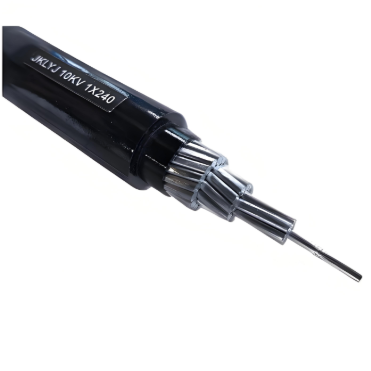Classification of Transmission Lines
Transmission lines are facilities used in power systems to transmit electrical energy generated by power plants to substations or end-users. Depending on different criteria, transmission lines can be classified in various ways. Below are the main classifications of transmission lines based on key standards:
1. Classification by Voltage Level
Transmission lines are typically categorized by their operating voltage as follows:
High Voltage Transmission Lines (HV): Generally refers to transmission lines with voltage levels between 35kV and 220kV. These lines are primarily used for power transmission within regions.
Extra High Voltage Transmission Lines (EHV): Transmission lines with voltage levels between 330kV and 750kV. EHV lines are suitable for long-distance, high-capacity power transmission, reducing transmission losses.
Ultra High Voltage Transmission Lines (UHV): Transmission lines with voltage levels of 1000kV and above. UHV technology enables even longer-distance, higher-capacity power transmission with lower losses. China is one of the first countries to widely adopt UHV transmission technology.
2. Classification by Conductor Type
Based on the material and structure of the conductors, transmission lines can be divided into:
Overhead Transmission Lines: The most common type of transmission line, where conductors are suspended in the air using towers or poles. Overhead lines have advantages such as low cost, easy construction, and simple maintenance, but they are more susceptible to weather conditions like lightning and snow.
Underground Cable Transmission Lines: Conductors are buried underground, typically used in urban centers or environmentally sensitive areas. Underground cables are unaffected by weather, offer higher safety, but are more expensive to install and maintain.
Submarine Cable Transmission Lines: Used for cross-sea connections or linking offshore wind farms to the mainland grid. Submarine cables require excellent waterproofing and corrosion resistance, commonly used for island power supply and offshore wind farm integration.
3. Classification by Phase Configuration
Depending on the number of phases, transmission lines can be classified as:
Single-Phase Transmission Lines: Typically used in low-voltage distribution systems or special applications like railway traction power supply. Single-phase lines have a simpler structure but lower transmission capacity.
Three-Phase Transmission Lines: The most common type of transmission, widely used in high-voltage and EHV systems. Three-phase lines offer large transmission capacity, high efficiency, and stability, making them suitable for high-power, long-distance power transmission.
4. Classification by Transmission Method
Based on the method of power transmission, lines can be categorized as:
AC Transmission Lines: Use alternating current (AC) for power transmission, the most common method. AC transmission systems are mature in technology, have widely available equipment, and are suitable for most power transmission scenarios.
DC Transmission Lines: Use direct current (DC) for power transmission, particularly suitable for long-distance, high-capacity transmission, especially for cross-sea or international connections. DC transmission has advantages such as lower losses, lower line costs, and no synchronization issues, but converter stations are more expensive.
5. Classification by Purpose
Based on their primary function, transmission lines can be divided into:
Transmission Lines: Used to transmit power from power plants to substations or large load centers. Transmission lines typically operate at higher voltage levels, cover longer distances, and have larger capacities.
Distribution Lines: Used to distribute power from substations to end-users. Distribution lines operate at lower voltages, cover shorter distances, and have smaller capacities. They can be further classified into high-voltage distribution lines (e.g., 10kV, 20kV) and low-voltage distribution lines (e.g., 380V, 220V).
6. Classification by Insulation Type
Based on the insulation method, transmission lines can be categorized as:
Bare Conductor Lines: Conductors without insulation, relying on air and supports for insulation. Bare conductor lines are commonly used in overhead transmission and have advantages such as low cost and good heat dissipation, but lower safety and reliability.
Insulated Conductor Lines: Conductors covered with insulating materials, used in underground cables, submarine cables, and special applications. Insulated conductor lines offer higher safety and are suitable for densely populated or environmentally sensitive areas.
7. Classification by Installation Environment
Based on the installation environment, transmission lines can be classified as:
Urban Transmission Lines: Used for power transmission within cities, often employing underground cables or overhead lines. Urban transmission lines must consider aesthetics, environmental impact, and safety.
Rural Transmission Lines: Used for power transmission in rural areas, typically using overhead lines. Rural transmission lines must account for terrain and climate conditions.
Mountainous Transmission Lines: Used for power transmission in mountainous regions, usually employing overhead lines. Mountainous transmission lines require careful design to handle complex terrain and harsh climates, with higher construction difficulty.
Submarine Transmission Lines: Used for cross-sea connections or linking offshore wind farms to the mainland grid, typically using submarine cables. Submarine transmission lines must address issues like seawater corrosion and marine biofouling.
8. Classification by Operating Status
Based on the operating status, transmission lines can be categorized as:
Operational Transmission Lines: Lines that are currently in use and actively transmitting power.
Backup Transmission Lines: Lines kept as a reserve and not in regular use but can be quickly switched on in case of a fault in the main line to ensure continuous power supply.
Retired Transmission Lines: Lines that have been decommissioned and are no longer in use, often due to aging or technological upgrades.
Summary
The classification of transmission lines is diverse, covering voltage levels, conductor types, phase configurations, transmission methods, purposes, insulation types, installation environments, and operating statuses. Each classification reflects the characteristics and technical requirements of transmission lines in different application scenarios. Choosing the appropriate type of transmission line is crucial for ensuring the safety, reliability, and efficiency of power systems.























